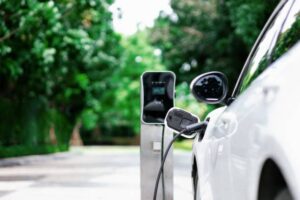The latest EV technology may seem expensive, but driving an EV is much more attainable with a novated lease. This salary packaging option helps reduce taxable income and package vehicle expenses into one simple regular payment.
With advanced battery technology and new charger networks, EVs are becoming more affordable in Australia. Moreover, salary packaging an EV can save the 47 per cent Fringe Benefits Tax (FBT). For more information about the EV novated lease vs buying outright, click here.
Buying Outright
Leasing an EV is popular due to the quick introduction of new technology and a lack of ownership commitment. When you hire an EV, you pay GST on the residual value (representing the car’s original purchase price) but not on running costs such as fuel, servicing, registration, tyres and insurance.
 This makes leasing an EV more affordable than buying. However, there are several pros and cons to leasing. At the end of your lease, you will have no equity in the car and can face hefty fines if you turn it in early. Moreover, you can’t use the car as a trade-in or sell it. Buying an EV offers full ownership and access to government tax credits. Purchasing an EV will require a larger upfront payment but allows you to pay off the loan at your own pace and not be bound by mileage restrictions.
This makes leasing an EV more affordable than buying. However, there are several pros and cons to leasing. At the end of your lease, you will have no equity in the car and can face hefty fines if you turn it in early. Moreover, you can’t use the car as a trade-in or sell it. Buying an EV offers full ownership and access to government tax credits. Purchasing an EV will require a larger upfront payment but allows you to pay off the loan at your own pace and not be bound by mileage restrictions.
Lower Upfront Costs
Leasing typically involves a down payment and monthly payments that are lower than you’d pay to finance a car over the same period. Plus, you can benefit from a few years of warranty protection.
EV technology evolves much faster than conventional vehicle models, so leasing an EV keeps you on the edge of new features and capabilities. But if similar cars sell for less at the end of your lease than the purchase price you agreed to in your contract, or if a used model with similar technology is available, buying your leased EV may make sense rather than turning it in. For more information about the EV novated lease vs buying outright, click here.
Buying an EV allows you to modify or customize it however you want, giving you the flexibility to sell or trade it later. But if you change your mind, you might face steep early termination fees or penalties.
No Maintenance Costs
While buying outright allows you to sell or trade in the car at any time, leasing requires that you return it at the end of your term. Depending on how well you’ve maintained the EV and whether you’ve exceeded your annual mileage cap, that could leave you without any equity or money to show for your efforts.
Leasing companies often include fuel, servicing, insurance and tyres in your monthly payments, as well as the costs of installing a home charger. You may also be able to access state and utility rebates that are unavailable for those who buy outright. However, if you decide to sell your EV at the end of the lease, you may not be able to recoup any tax credits you’ve claimed.
Tax Credits
Since 2022, eligible electric vehicles have been exempt from Fringe Benefits Tax (FBT) when leased through a salary-sacrificing arrangement. This could reduce the upfront cost of an EV by up to $9,000, depending on which car you select.
However, this exemption only applies if the vehicle is leased from an employer and does not apply to privately purchased cars. It’s still a good idea to seek financial advice about the implications of leasing an EV for your circumstances, including means-tested government benefits. For more information about the EV novated lease vs buying outright, click here.
Another benefit of leasing an EV is that at the end of the lease period, you can buy the vehicle for the projected resale value written into the contract. This can be a good option if demand for the car is high at the time of lease-end.
No Zero Equity
When your lease ends, you will not have equity in the car. This means you can’t sell it or use it as a trade-in to get your money back.
However, this doesn’t mean you can’t purchase your EV at the end of the term. You can, but you’ll need to pay the residual amount plus lct.